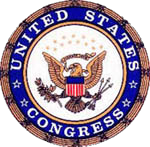They Keep Growing, and Growing...
Although there is no overall census of the size of virtual worlds, two of the heavyweights recently released new numbers. First, World of Warcraft has now reached the 10 million mark. That’s an impressive milestone for a game that went live in November 2004. More than half (5.5 million) of those users are from Asia; 2.5 are based in North American and 2 million in Europe. That is a large number of subscribers. However, it pays to read the fine print:
World of Warcraft subscribers include individuals who have paid a subscription fee or have an active prepaid card to play World of Warcraft, as well as those who have purchased the game and are within their free month of access. Internet Game Room players who have accessed the game over the last thirty days are also counted as subscribers. The above definition excludes all players under free promotional subscriptions, expired or cancelled subscriptions, and expired prepaid cards. Subscribers in licensees' territories are defined along the same rules.
So, in theory the 10 million figure, for the most part, includes only paying players, though not necessarily monthly subscribers. Large differences exist between the Chinese market and the Western market for WoW. In the West, players pay $15 per month for a subscription. In China, players pay on an hourly rate, and generate only 15% of the revenue of their Western counterparts. In other words, it’s a lot easier to boost the number of players when hourly fees can fall as low as 4 cents an hour.
Now onto the other release, the December and year end statistics for Second Life. Second Life has, undoubtedly, grown tremendously in a short period of time. According to Linden Lab, there are roughly 12 million resident registrations. While Linden Lab acknowledges that there are many users with multiple registrations (I have two myself) as well as many users who sign up but never again visit. According to stats on the Second Life website (updated through 1/26/08),
| Residents Logged-In During Last 7 Days | 326,881 |
| Residents Logged-In During Last 14 Days | 479,927 |
| Residents Logged-In During Last 30 Days | 748,301 |
| Residents Logged-In During Last 60 Days | 1,192,166 |
| Total Residents | 12,156,494 |
An alternative measure of user activity is hours spent in world. Second Life also releases monthly data which provides a good deal of demographic and geographical detail. The latest release, posted to their Economy Blog, covers December 2007. In December, users logged 25.6 million hours in Second Life. That is a an impressive statistic when compared to December 2003, when users hours totalled less than 80,000. While a small number of heavy users can influence this figure, it does provide a better metric of growth in the virtual world than user registrations. The graph linked below shows how hours spent in Second Life ha grown over the past years. The second graph looks only at the past two years: January 2006 to December 2007. It still shows strong growth, but by excluding the earlier years it provides a more balanced look at Second Life expansion. As can be seen, there was actually a significant decrease in hours used in November 2007, and hours logged in December were lower than those logged in October. (Sorry for the poor image quality. The blue line indicates user hours; red is user registrations.)
Second Life Population: Sept. 2003 to Dec. 2007




